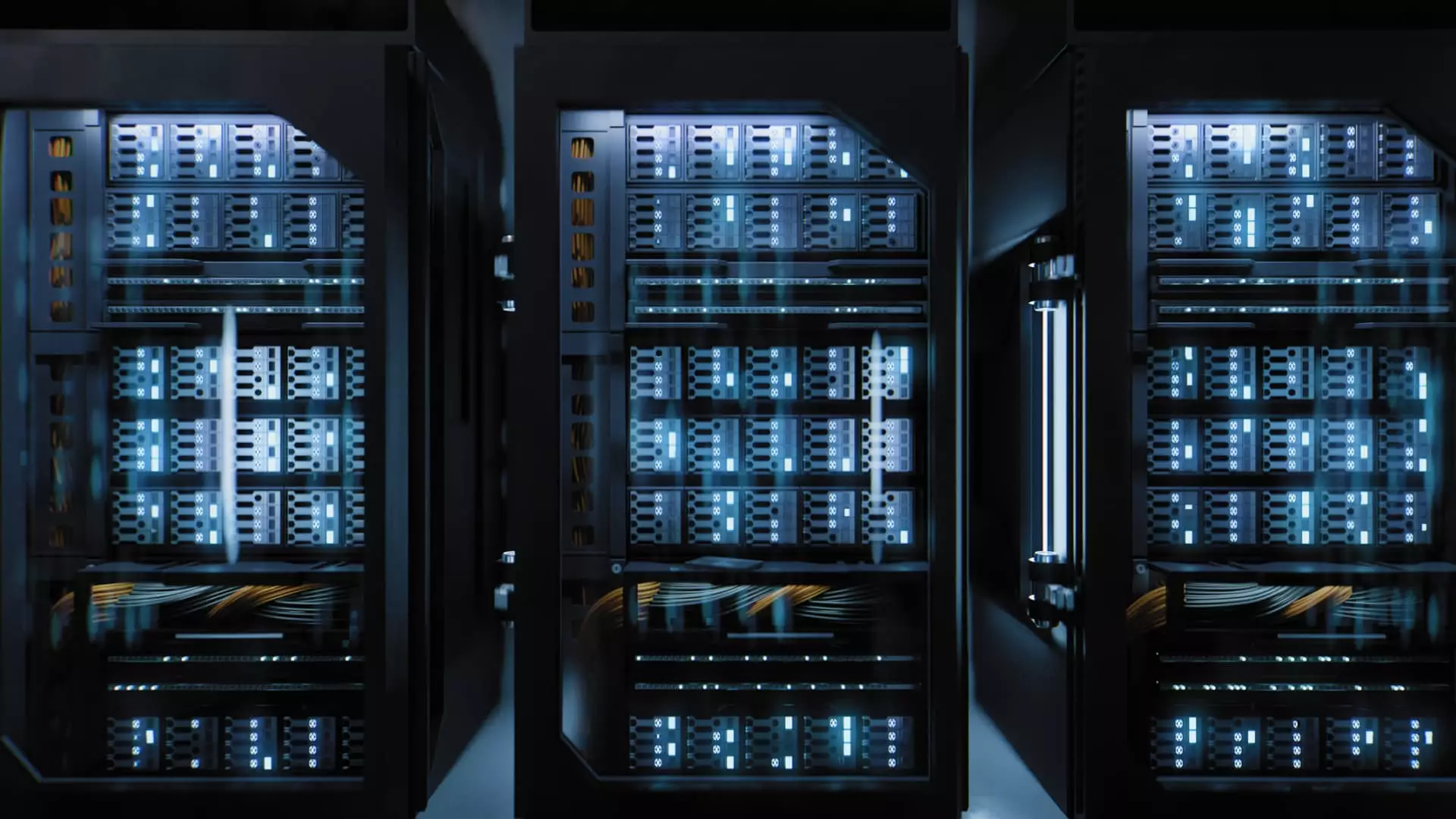The rapid acceleration of artificial intelligence (AI) technologies is shifting the paradigm of data center operations, particularly within Europe. As global demand for AI-driven solutions soars, the infrastructure required to support these technologies is confronting environmental challenges. According to research by Goldman Sachs, the demand for data centers is projected to grow by a staggering 160% by 2030 due to AI advancements. Although this growth presents substantial opportunities for the tech industry, it also raises critical questions about sustainability, energy consumption, and the long-term impacts on Europe’s decarbonization goals.
At the heart of this issue are high-performance chips known as graphics processing units (GPUs), essential for the operation of advanced AI applications, including large language models. These GPUs generate significant heat, necessitating advanced cooling systems, typically requiring lower water temperatures to operate optimally. This immediate preference for high-density computing presents ramifications for the energy consumption of data centers, which could substantially compromise environmental commitments established by the European Union.
The transformation to high-powered AI chips illustrates a fundamental conflict between increasing technological capabilities and the maintenance of energy efficiency. Data centers utilizing cutting-edge Nvidia GPUs, for instance, can consume energy equivalent to that of 15 to 25 average homes per square meter. This alarming statistic was highlighted by Andrey Korolenko, a chief figure at Nebius, who noted the profound implications on cooling strategies when dealing with such dense power usage.
Michael Winterson, the chair of the European Data Center Association (EUDCA), has expressed concerns that addressing the cooling requirements of these new chips by lowering water temperatures could set the industry back two decades in terms of sustainability. His comments underscore a critical point: as European nations strive to meet ambitious energy reduction targets—an 11.7% reduction by 2030 is proposed—there is a pressing need for responsible energy management that does not sacrifice environmental quality for technological progression.
Further complicating the issue is the landscape of imported technology and infrastructure. U.S. chipmakers dominate the AI space, often prioritizing market share over resource stewardship. This American-focused “space race” accentuates the dilemma faced by European developers: how to accommodate foreign technologies while adhering to regional sustainability mandates.
Efficient cooling technologies are crucial in resolving the dichotomy of energy usage versus environmental accountability. Liquid cooling, often more effective than traditional air cooling systems, had previously been seen as a viable solution to manage the heat generated by powerful chips. However, reports reveal that U.S. chip designers are now urging European manufacturers to adapt their systems to work with higher water temperatures. This deviation from prior expectations is causing concern within the industry, as it may inadvertently lead to increased energy consumption which could contravene EU sustainability efforts.
Steven Carlini of Schneider Electric has pointed out that, although energy use is expected to rise, the Power Usage Effectiveness (PUE)—a measure of how efficiently a data center uses energy—might not see an equivalent rise if lower water temperatures are implemented. As companies pivot towards deploying Nvidia’s Blackwell super chips, requests for cooling systems have shifted to demand temperatures of 20-24 degrees Celsius, a stark contrast to the 30-32 degrees Celsius previously expected for liquid cooling solutions.
As organizations like Nebius embark on significant investments in AI infrastructure, the industry is faced with both an urgent challenge and an opportunity for innovative collaboration. Companies are considering how a sustainable approach can coexist with burgeoning technological demands. Ferhan Gunen from Equinix emphasized that these discussions are evolving, highlighting that implementing high-powered chips and a larger number of servers does not yield a straightforward answer regarding energy efficiency and cooling requirements.
Ultimately, the juxtaposition of technological advancement in AI and the necessity for sustainable practices will shape the future of data centers in Europe. As stakeholders from across the sector engage with regulatory bodies and technology providers to reshape the narrative around energy consumption, the ability to strike a balance between improving operational efficiency and achieving environmental goals will determine the viability of AI-driven data centers.
A synergistic approach focused on advancing energy-efficient technologies, while fostering collaboration across the Atlantic, may pave the way for sustainable growth. As data centers evolve, transitioning towards green innovations may not only help in meeting energy consumption goals but also enable Europe to retain its competitive edge in the global tech landscape.


Leave a Reply